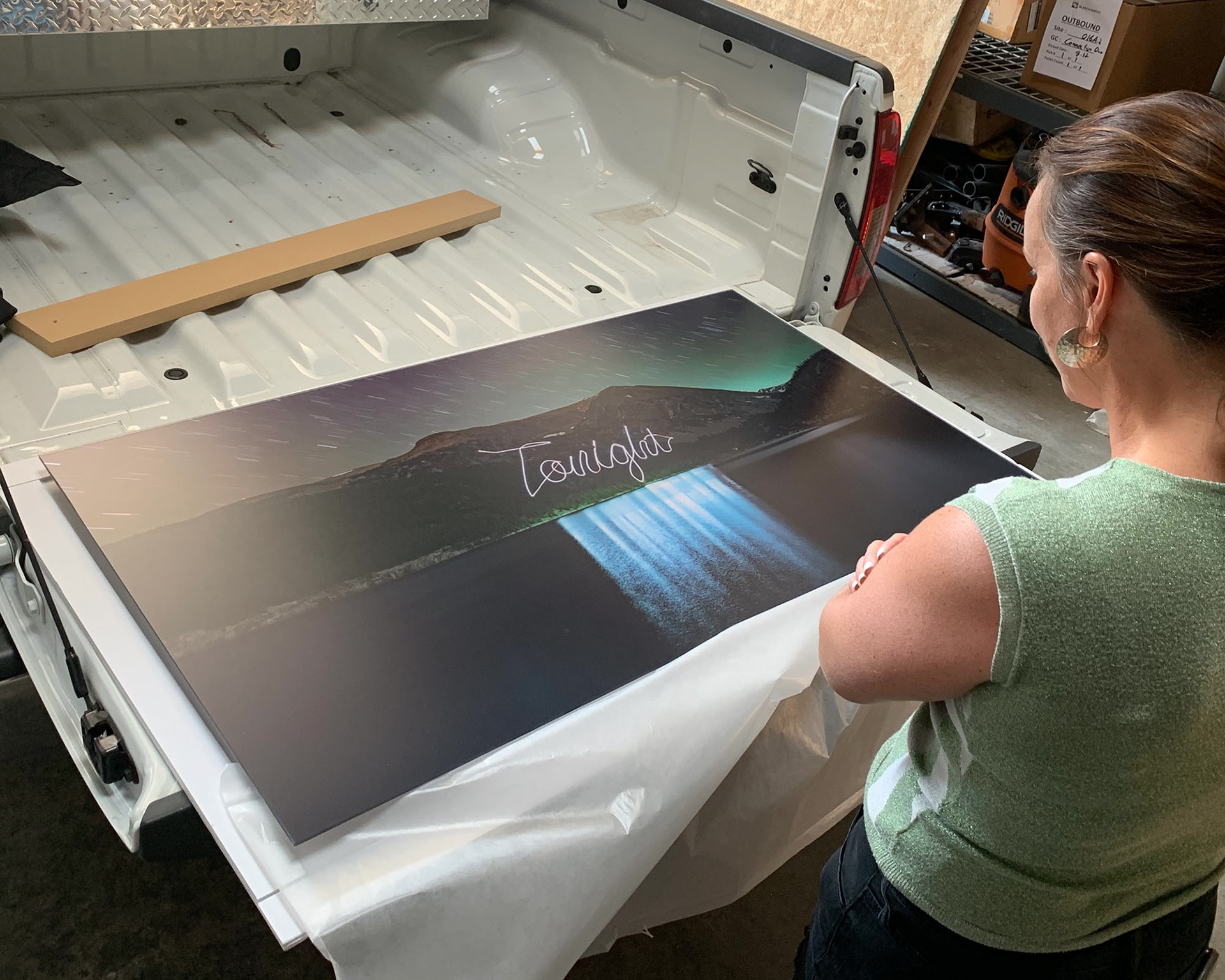
For presentation purposes only.

Acrylic and aluminum mounted - SOLD OUT

Unmounted and varnished
Mark Bellncula / Lume Machina, 2020, 4 editions.
1 of 4, acrylic and aluminum mounted, 48 x 27 inches, SOLD
2 of 4, acrylic and aluminum mounted, 48 x 27 inches, SOLD
3 of 4, unmounted and varnished, untrimmed 54 x 33 inches, $800us +shipping
4 of 4, unmounted and varnished, untrimmed 54 x 33 inches, $900us +shipping
“Tonight” was in development for over a year. It’s original size made it problematic, almost too large to run on a single battery required for single exposures. The size also necessitated a larger distance relative to the camera. After several test flights (one of which, the flight ended with only 6% power) two test exposures and waypoint adjustments, the mission had a reliable power burn rate. And all the flight testing was up against the natural forces of winter and a global pandemic. The location, Montgomery Reservoir, lies at 10800’ which makes it frozen and unaccessible in the winter. The spring melt was missed due to lockdown orders, and when those orders were relaxed in the late spring the lake surface was 20’ below normal. Exposures were furthered delayed till mid summer when the lake would be full. The size also necessitated a crew, Cam Sale was the PIC and Arthur Balluff was the BTS time-lapse photographer. On our first night on location, at 10:15pm, when it’s finally dark enough for proper exposures, the clouds rolled in, covering the stars and pouring rain on us. The second night was ideal. On Wednesday July 15th at 10:30pm we started proper exposures. The exposable part of the piece is 1000’ wide, 400’ high and the bottom ligature of the “g” bottoms out at 25’ AGL. It is 500’ away from the launch/land zone and 2000’ away from the camera. Exposure was nearly 7 minutes long. There are two fourteener peaks in the frame, Mount Bross and Mount Lincoln. And due to the pandemic, there are no aircraft trails in the sky, but there are 4 meteor streaks, if you look closely enough.